
views
Preparing to Drive
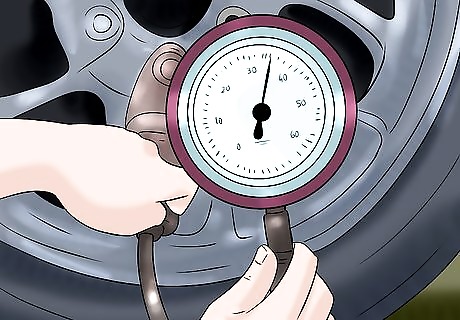
Keep your tires aired up. Tire pressure is more important for SUVs than other smaller vehicles because of their size and weight. SUVs are heavier than most vehicles, prone to rolling, and are sometimes used for off-roading. No matter how you use your SUV, the tires must be balanced to avoid dangerous conditions. Use the recommended air pressure reading in your vehicle's owner's manual or on the placard inside your driver's side door jamb. This is your best resource for finding the proper tire pressure. Do not use the measurement on the sidewall of your tire because it is the maximum tire pressure your tire can withstand. Check your tire pressure once a month and after extreme temperature changes, such as the first hot day of the year or after a cold front. Test your tires at a time when you haven't driven on them much. Use a tire gauge either at home or at a gas station. Compare the reading to the recommended tire pressure. If the reading is lower than the recommended tire pressure, air up your tires. If it's higher than recommended, push in the valve to let out some of the air.
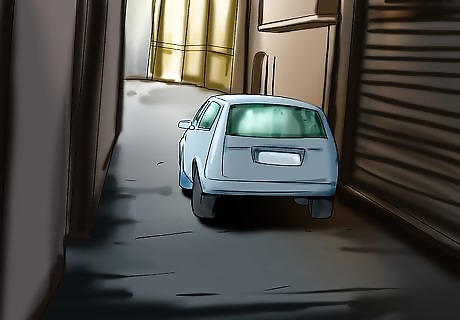
Check around your vehicle before getting into the driver's seat. Because SUVs are so high off the ground, it's hard to see if items, pets, or people are around your vehicle when you're sitting in the driver's seat. Before you even get in the vehicle, check around your car to make sure that the area is clear.

Adjust the mirrors. Check the rearview and side mirrors to make sure that you have the best possible visibility behind and around your vehicle. SUVs are large vehicles, so you'll need your best line of sight to navigate your vehicle. Your rearview mirror should face straight out of your rear window with a full picture behind your car. Your side mirrors should be at a slight angle that barely shows the side of your car. To provide the best view around your car, you should tilt the mirror just wide enough that your car nearly disappears from view.
Driving in Clear Conditions
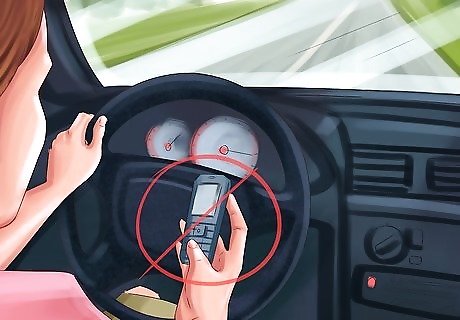
Avoid distractions. Keep your eyes on the road at all times. When driving an SUV, you should be more alert than in other vehicles because it takes longer to stop. Don't use your phone, eat snacks, put on makeup, or play with your radio.
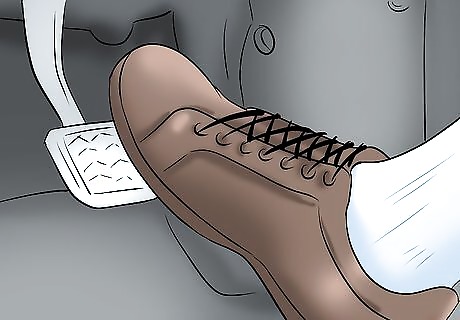
Increase speed slowly. Because of the size of your vehicle, you'll need to slowly increase your speed. Aggressively pressing on the gas can make it harder to control your vehicle.
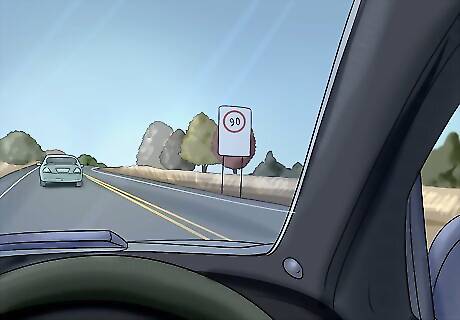
Allow extra space between you and the vehicle in front of you. Because your SUV weighs more than a smaller vehicle, it will take more space for your vehicle to stop. While you will brake as usual, the SUV will take longer to stop because of its weight. Avoid tailgating other vehicles because you may not have enough room to stop. A common way to determine a safe driving distance is to use the "three second rule." Choose a landmark, like a sign. When the car in front of you passes it, count how many seconds it takes for you to pass the landmark. There should be a minimum of three seconds between you and the other vehicle. In an SUV, allow for more than three seconds.
Preventing Rollovers
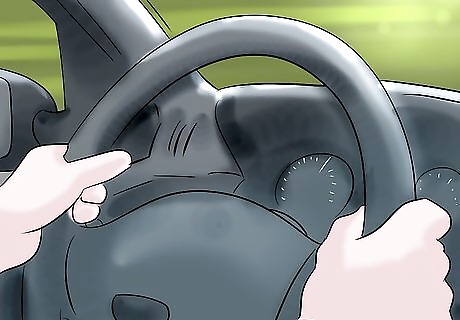
Avoid swerving. While it's tempting to overcorrect your steering, your SUV is more likely to roll over if you turn the wheel too quickly. Instead, keep a firm hand on your steering wheel and slowly pump the brakes while you navigate around road obstacles.
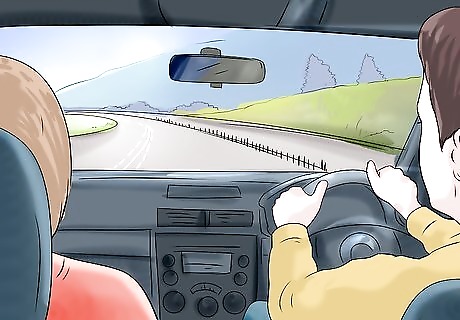
Slow down on curved roads. SUVs easily go onto the shoulder on curved roads, creating a hazard because the vehicle can roll. Lower your speed and try to anticipate curves when driving a winding road. You should drive slowly enough that you barely have to turn the wheel when you go around curves. A safe speed on most winding roads is between 20–30 mph (32.2–48.3 km/h), while very tight turns have a safe speed of 10–15 mph (16.1–24.1 km/h).
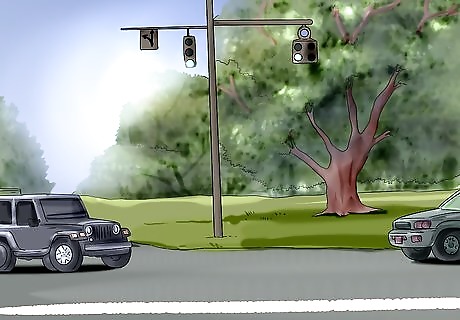
Avoid sudden turns. Sudden turns shift your vehicle's weight and can make the vehicle lose its balance, which can cause a rollover. Slow down before a turn, or lightly pump the brakes as you get closer to the turn. If you can, pass up a sudden turn and circle back to your destination. While this is not possible on a winding road, it is when you miss an exit or turn off.

Avoid storing items on the roof. Storing items on the roof of your SUV shifts the center of gravity and increases your risk of rollover. To stay safe, secure your cargo inside the vehicle.
Driving in Bad Weather
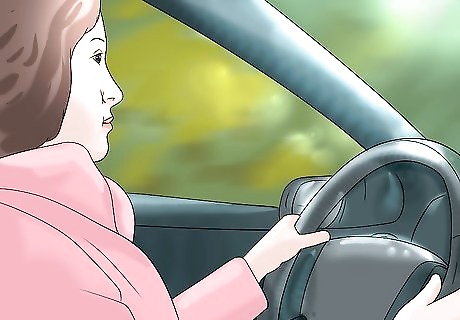
Drive slower than you would in a smaller vehicle. SUVs are equipped with 4-wheel drive, so they can speed up more quickly than a regular car. However, they do not slow down any faster. In fact, their size often makes it take longer to slow down. Drive slowly so that you are able to stop in a reasonable space. Reduce your speed by at least ten miles under the speed limit.
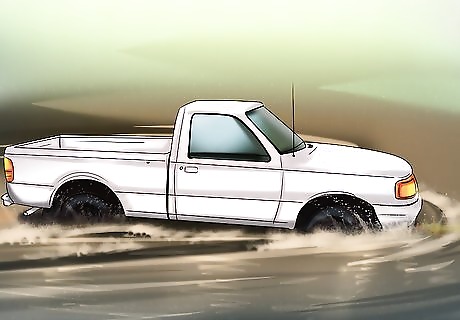
Avoid going off-road during bad weather. If you do take your SUV off-road, you shouldn't when the weather is bad. Your vehicle won't be able to navigate very well in the wet, muddy, or icy conditions. All-wheel drive doesn't mean that your vehicle isn't vulnerable in bad conditions.

Drive in the middle lane when the roads are wet. Water tends to gather on the sides of the road, so the middle lane will be the least wet area of the roadway. Wet roads can cause hydroplaning and will make it harder for you to stop.
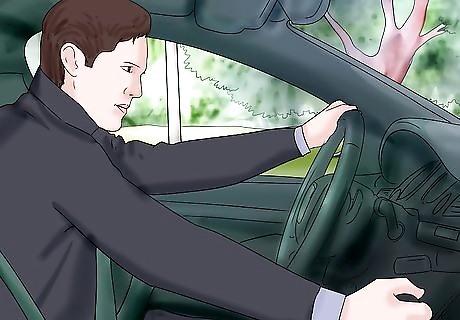
Slow down on wet or icy roads. Wet and icy roads can cause hydroplaning and make it harder to stop your vehicle. Lower your speed so that you can maintain control of the vehicle and more easily navigate out of dangerous situations. Accelerate slowly and give yourself plenty of time to stop. Go especially slow around intersections, bridges, overpasses, off-ramps, and shady spots, which are all susceptible to black ice. You should drive at least ten miles less than the speed limit.
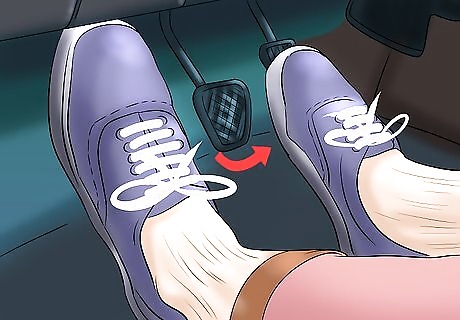
Avoid using cruise control on icy roads. You need to be in full control of your vehicle when roads are icy, and cruise control takes away some of your control. Increase and decrease speeds using only your pedals during icy conditions.
Going Off-Road
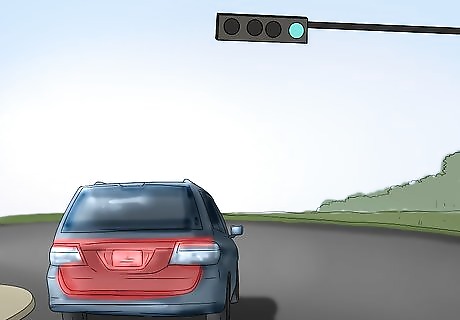
Avoid extreme off-roading. Average SUVs are not made for extreme conditions. Unless your model specifically says it is made for extreme terrain, choose only mild off-road conditions. Stick to dirt roads, firm soil, and flat areas.
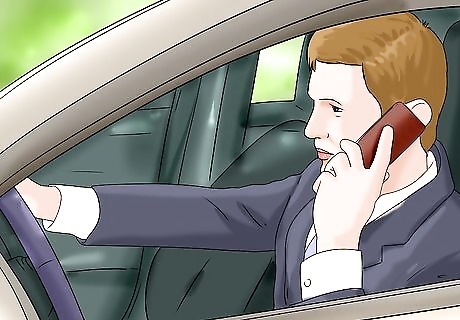
Tell people where you are going and how long you'll be there. This is especially true if you're planning to drive somewhere remote or if you're alone. If something happens and your vehicle becomes stuck or disabled, then you will need someone to know where to look for you. You may not always have cell service when off-road, so be sure to tell someone where you're going beforehand.
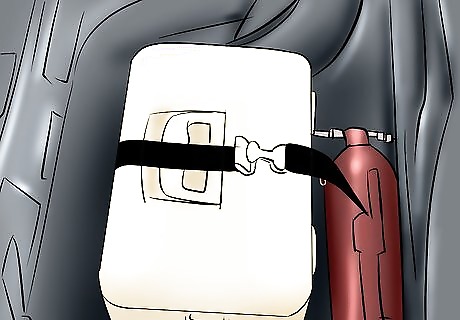
Secure all cargo. Loose cargo will move around while you drive off-road and cause your vehicle's center of gravity to shift. This could put you at risk for an accident or rollover. Try tying down your cargo, and put as much as you can in the back of your vehicle behind the seats.
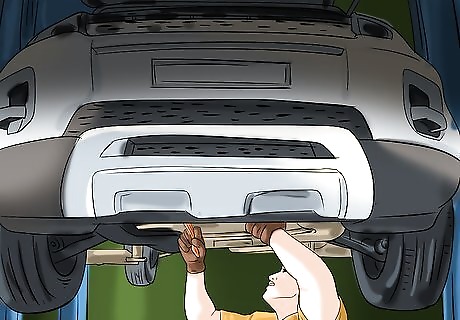
Engage your all-wheel drive. All-wheel drive will help you better navigate the natural terrain, and it will keep your vehicle from getting stuck if some of your wheels lose traction in the soil or dips in the terrain.
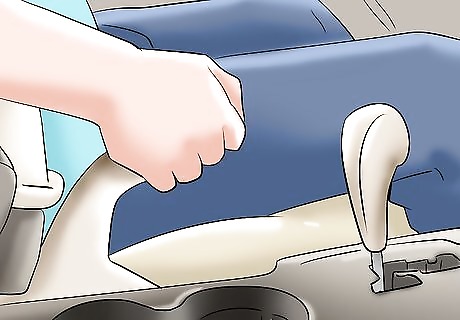
Use your downhill brake assist. Even mild off-road conditions can have dips, so make sure your vehicle is set in assist mode so that you are able to stop if you need to.

Put the SUV in first gear. You will need to move as slowly as possible and with as much control as you can have over the vehicle, so first gear is the best choice. When you are off-road, you will inch forward slowly.



















Comments
0 comment